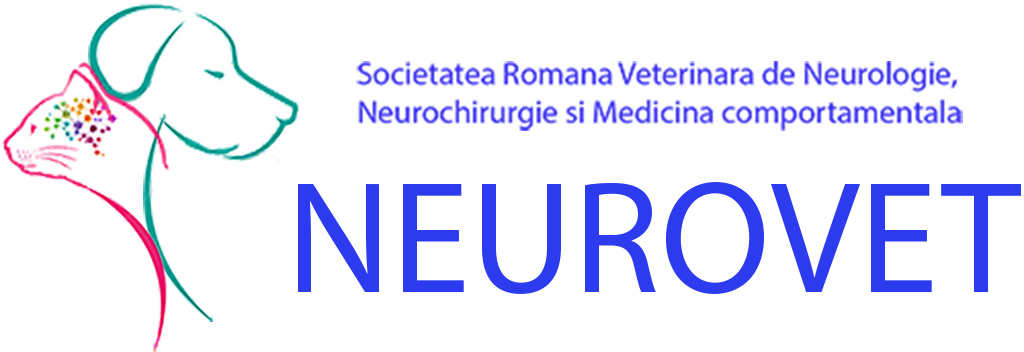Epidemiological aspects, haematological and biochemical alterations in some gastrointestinal parasitic diseases of carnivores
DOI:
https://doi.org/10.52331/cvj.v26i2.25Keywords:
dog, cat, gastrointestinal parasites, haematological, biochemical, parametersAbstract
Gastrointestinal parasites are widespread pathogenic agents and one of the main causes for mortality in young dogs and cats. Many of these zoonotic parasites are relevant in terms of public health. The presence of parasites in the animal organism causes local and general modifications in the various organs they parasitize or transit throughout their life cycle. The present study aimed to identify the most frequent gastrointestinal parasites of dogs and cats and to monitor the alterations that occur in terms of haematological and biochemical parameters. The studied animals, 25 dogs and three cats from Timiș and Caraș Severin counties, were brought to the On-call room of the University Clinics of the Faculty of Veterinary Medicine Timișoara. The laboratory methods that were used were the Willis flotation method, the Baerman larvoscopic method and the Lugol method. The haematological methods, namely flow cytometry, cytochemistry and spectrophotometry, were performed at Bioclinica Laboratories, on whole blood samples that were collected in EDTA or simple tubes. The studied animals were positive for Giardia, Cystoisospora, Dipylidium, Ancylostoma, Toxocara and Trichocephalus. The positivity rate was 57.14%, with prevalence rates according to the parasitic species ranging from 3.57% to 21.42%, with multiparasitism in 32.14%, and monoparasitism in 17.85%. The values recorded for red blood cells, haemoglobin and hematocrit followed the same trendmost of the animals being situated within physiological values, except for three dogs, that recorded values below the minimal level. In the case of MCH (mean corpuscular haemoglobin) and MCHC (mean corpuscular haemoglobin concentration) the values recorded for most dogs were within physiological limits, except for three dogs which overpassed the maximum level. Eosinophils were high in all dogs, which is a characteristic feature of parasitism. The serum urea concentrations revealed the fact that all for dogs that were taken into study had values above the maximum limit.
References
Nguyen T, Clark N, Jones MK, Herndon A, Mallyon J, Soares Magalhaes RJ, Abdullah S. Perceptions of dog owners towards canine gastrointestinal parasitism and associated human health risk in Southeast Queensland. One Health. 2021, 12:100226. doi: 10.1016/j.onehlt.2021.100226. PMID: 33665329; PMCID: PMC7903457.
Regidor-Cerrillo J, Arranz-Solís D, Moreno-Gonzalo J, Pedraza-Díaz S, Gomez-Bautista M, Ortega-Mora LM, Collantes-Fernandez E. Prevalence of intestinal parasite infections in stray and farm dogs from Spain. Rev Bras Parasitol Vet. 2020, 29(3):e014920. doi: 10.1590/S1984-29612020063. PMID: 32935772.
LUCA Iasmina, OPRESCU Ion, MORARIU Sorin, MEDERLE Narcisa, ILIE Marius Stelian, DĂRĂBUŞ Gheorghe Effects of some disinfectants on Toxocara spp.eggs viability of dogs and cats. Turk J Vet Anim Sci 2020 44: 734-739
Qadir, S., Dixit, A. K., Dixit, P., & Sharma, R. L. Intestinal helminths induce haematological changes in dogs from Jabalpur, India. Journal of Helminthology, 2010, 85(04), 401–403. doi:10.1017/s0022149x10000726
Dărăbuş, Gh., Oprescu, I., Morariu, S., Mederle, N., Ilie, M., Ghid practic în bolile parazitare, Vol. I, Agroprint, Timișoara, 2013, ISBN 978-606-8037-25-7
Dărăbuş, Gh., Oprescu, I., Morariu, S., Mederle, N., Ilie, M., Ghid practic în bolile parazitare, Vol. II, Agroprint, Timișoara, 2013, ISBN 978-606-8037-25-7
Mircean V, Györke A, Cozma V. Prevalence and risk factors of Giardia duodenalis in dogs from Romania. Vet Parasitol. 2012, 184(2-4):325-9. doi: 10.1016/j.vetpar.2011.08.022. PMID: 21899952.
Dărăbuș Gheorghe, Luca Iasmina, Oprescu Ion, Morariu Sorin, Mederle Narcisa, Ilie Marius, Sachter Yacov, Pollution with parasitic elements of green areas in Timișoara, Sci Parasitol 2018, 19(1-2):62-65,
Enriquez GF, Macchiaverna NP, Argibay HD, López Arias L, Farber M, Gürtler RE, Cardinal MV, Garbossa G. Polyparasitism and zoonotic parasites in dogs from a rural area of the Argentine Chaco. Vet Parasitol Reg Stud Reports. 2019, 100287. doi: 10.1016/j.vprsr.2019.100287. Epub 2019 Apr 8. PMID: 31027600.
Bishop GT, DeBess E. Detection of parasites in canine feces at three off-leash dog parks in Portland, Oregon 2014. Vet Parasitol Reg Stud Reports. 2020, 100494. doi: 10.1016/j.vprsr.2020.100494. Epub 2020 Nov 7. PMID: 33308738.
Sharma Sanjeev Kumar, Sinha S.R.P., Sinha Sucheta, Jayachandran C., Kumar Mukesh Post-treatment haematological studies on toxocariosis in dogs, Journal of Veterinary Parasitology, 2010, 24, 1, 63-65.
Voßmann, M.T., Klinische, hämatologische und serologische Befunde bei Welpennachpränataler Infektion mit Toxocara canis WERNER 1789 (Anisakidae). Doctoral Thesis. University of Veterinary Medicine Hannover, Hannover, 1985, Germany, pp. 1–58.
Zimmermann, U., Quantitative Untersuchungen über die Wanderungund Streuung der Larven von Toxocara canis WERNER 1782 (Anisakidae) imdefinitiven Wirt (Beagle) nach fraktionierter Erstund Reinfektion. Doctoral Thesis. University of Veterinary Medicine Hannover, Hannover, Germany, 1983, pp. 1–77.
Schnieder T., Laabs E.M., Welz C., Larval development of Toxocara canis in dogs, Vet. Par. 2011, 175, 193–206.
Manhardt, J., Das Verhalten von Larven von Toxocara canis WERNER 1782 (Anisakidae) während und nach der Lungenwandering imdefinitiven Wirt (Beagle). Doctoral Thesis, University of Veterinary Medicine Hannover, Hannover, Germany, 1980, pp. 1–76.
Published
License
Copyright (c) 2021 Authors

This work is licensed under a Creative Commons Attribution 4.0 International License.





